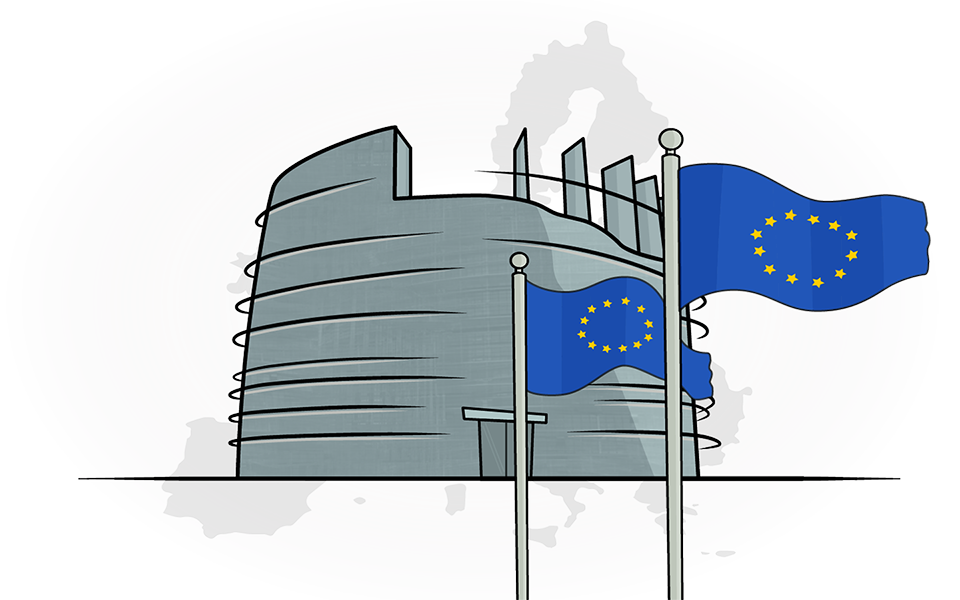Medical literature
- October 2013. Pediatric Blood and Cancer
In Germany and Austria, more than 90% of pediatric cancer patients are enrolled into first-line clinical trials or interim registries. Essential components are a pediatric cancer registry and centralized reference laboratories, imaging review, and tumor board assistance. The five-year overall survival rate in countries where such infrastructures are established has improved from less than 20% before 1950 to more than 80% since 1995.
Pediatr. Blood Cancer, 60: 1574–1581. DOI: 10.1002/pbc.24598
- October 4, 2013. Science
A spoof paper concocted by Science reveals little or no scrutiny at many open-access journals.
A study full of mistakes and meaningless has been accepted in 60% of cases. The most important thing is the bank transfer.
Science 2013;342:60-65 DOI: 10.1126/science.342.6154.60
- October 2, 2013. Journal of American Medical Association
The Women’s Health Initiative – A Victory for Women and Their Health
A very good examples of one of the key messages of ECRAN: the importance of independent clinical trials, for science and for public health. “Twenty-two years following its inception, the WHI (the study that overturned medical dogma regarding the use of menopausal hormone therapy) is a model for publicly funded rigorous, thorough, and objective clinical trials that have broadly affected human health.
JAMA. 2013;310(13):1349-1350. DOI:10.1001/jama.2013.278042.
- September 19, 2013. Edmond J. Safra Research Lab, Working Paper Series n.23
Independent Drug Testing to Ensure Drug Safety and Efficacy
This article analyses a reform proposal that promises to remove drug firm influence on the design and conduct of clinical trials for new drug marketing and that has been opposed and blocked since the fifties by the pharmaceutical industry.
- September 18, 2013. The Lancet
The right to participate in high-risk research
“Institutional review boards have a reputation for impeding perfectly sound and relevant studies to protect participants from harm” says
The Lancet 2013 DOI:10.1016/S0140-6736(13)61575-5
- September 16, 2013. British Medical Journal
Quantification of harms in cancer screening trials: literature review.
Randomised trials that assess the efficacy of cancer screening for reducing incidence of cancer or cancer mortality, seldom quantify the harms of screening. This study shows that out of the 57 cancer screening trials examined, the most important harms of screening – overdiagnosis and false positive findings – were quantified in only 7% and 4%, respectively.
BMJ 2013;347:f5334. DOI: http://dx.doi.org/10.1136/bmj.f5334
- September 5, 2013. New England Journal of Medicine
Risks (and Benefits) in Comparative Effectiveness Research Trials.
In order to provide ethically appropriate oversight and informed consent for randomized, controlled comparative effectiveness research trials, investigators should consider, manage, and inform potential participants about at least nine different types of potential risk.
N Engl J Med 2013; 369:892-894. DOI: 10.1056/NEJMp1309322
- August 27, 2013. The PLOS Medicine Editors
Better Reporting of Scientific Studies: Why It Matters.
A growing body of evidence demonstrates improvements in the quality of reporting scientific studies associated with the publication of reporting guidelines; however, translation of the guidelines into practice remains a challenge.
PLOS Med 10(8): e1001504. DOI:10.1371/journal.pmed.1001504.
- July 2013. Journal of American Medical Association
Informing the uninformed: optimizing the consent message using a fractional factorial design.
Many parents often complain difficulty understanding information about research and making informed decisions. This article presents several communication strategies for investigators, clinicians, institutional review boards that represents a simple, practical, and inexpensive means to optimize the consent message and enhance parental and patient understanding.
JAMA Pediatr. 2013 Jul;167(7):640-6. DOI: 10.1001/jamapediatrics.2013.1385.
- July 12, 2013. British Medical Journal
There is large diversity on whether and how analyses of primary outcomes are adjusted in randomized controlled trials and these choices can sometimes change the significance of the results. The authors of this study suggests that registered protocols should always explicitly specify adjustments plans for main outcomes and analysis should follow these plans.
BMJ 2013;347:f4313. DOI: http://dx.doi.org/10.1136/bmj.f4313
- July 10, 2013. Journal of American Medical Association
Editorial Policies for Clinical Trials and the Continued Changes in Medical Journalism.
Over the years, several rules have been introduced in order to ensure scientific validity in the design and conduct of a clinical trial. This editorial traces the history of this process, also explaining the last changes in Medical Journalism policy.
JAMA. 2013;310(2):149-150. DOI:10.1001/jama.2013.8083.
- July 9, 2013. British Medical Journal
US study criticized for experimentation with premature infants.
There have been strong, public arguments in the United States criticizing the lack of informed consent concerning risks in a US National Institutes of Health funded study conducted on more than a thousand extremely premature babies to be maintained at higher or lower oxygen saturation levels after delivery. Central to this dispute are conflicting views as to whether similar studies are more like experiments or more like the existing standards of care.
BMJ 2013;347:f4198 DOI: http://dx.doi.org/10.1136/bmj.f4198
- June 14, 2013. British Medical Journal
Why we can’t trust clinical guidelines.
There is evidence that even when doctors believe a guideline is likely to be harmful and compromised by bias, a substantial number follow it. This article explore the ethical difficulties that doctors face when biased guidelines are promoted and raise the question: why do processes intended to prevent or reduce bias fail?
BMJ 2013;346:f3830. DOI: http://dx.doi.org/10.1136/bmj.f3830
- May 14, 2013. British Medical Journal
Demystifying trial networks and network meta-analysis.
Networks of randomized clinical trials can be evaluated by network meta-analysis, a procedure that allows comparing effectiveness of interventions that may or may not have been evaluated directly against each other. This article explains essential concepts about network meta-analyses.
BMJ 2013;346:f2914. DOI: http://dx.doi.org/10.1136/bmj.f2914
- March 1, 2013. European Journal of Hospital Pharmacy
Mike Clarke of Queens University, Belfast, describes two randomized clinical trials that were well-designed and well-conducted and had important repercussions on clinical practice, in defense of the “role of clinical randomized trials (in particular systematic review of randomized trials) as instruments for reliable and strong evaluation of interventions adverse events”.
Eur J Hosp Pharm 2013;20:149-151. DOI: 10.1136/ejhpharm-2012-000262
- July 17, 2012. Annals of Oncology
Inclusion in clinical trials is generally viewed as best practice for most newly diagnosed childhood cancers, but the impact on survival has rarely been examined. The results of this analysis show that the increasing level of participation in trials, facilitated by the organisation of specialist care, has underpinned the substantial improvements in survival seen at the population level.
Ann Oncol 2012;23(9): 2464-2469. DOI: 10.1093/annonc/mds183
- January 1, 2010. Science
Opportunities for Research and NIH,
Biomedical research investigators are increasingly working in teams, accelerated by interdisciplinary approaches and empowered by open access to tools, databases, and technologies. This article identifies five areas of particular promise that are ripe for major advances and could reap substantial downstream benefits.
Science 2010;327:36-37. DOI: 10.1126/science.1185055
Rapid publication of the results of clinical trials is essential for ensuring maximal benefits for patients and enabling clinicians to make decisions that reflect an accurate, balanced perspective on existing evidence. This study (funded by the NHLBI itself) showed that the results of less than two thirds of NHLBI-funded randomized clinical trials of cardiovascular interventions were published within 30 months after completion of the trial. Trials that focused on clinical events (e.g. death for cardiovascular disease) were published more quickly than those that focused on surrogate end points (e.g. cholesterol or blood pressure levels).
N Engl J Med 2013; 369:1926-1934. DOI: 10.1056/NEJMsa1300237
- November 9, 2013
This systematic review shows there is not enough evidence that patient portals for electronic health recording (HER) improve health outcomes, cost or utilization yet. “Portals represent a new technology with benefits that are still unclear. Better understanding requires studies that include details about context, implementation factors, and cost”.
Ann Intern Med 2013;159(10):677-87. DOI:10.7326/0003-4819-159-10-201311190-00006
- October 8, 2013
This study aimed to determine whether unpublished clinical study reports (CSRs) provide information gain compared to publicly available sources for patient-relevant outcomes and concluded that, “in contrast to CSRs, publicly available sources provide insufficient information on patient-relevant outcomes of clinical trials. CSRs should therefore be made publicly available”.
PLoS Med 2013;10:e1001526. doi:10.1371/journal.pmed.1001526
- August 22, 2013
Medical research: Trial unpredictability yields predictable therapy gains
http://www.nature.com/nature/journal/v500/n7463/full/500395a.html
“New treatments prove to be better than standard ones just over half the time, and that’s how it should be”. The result of this retrospective analysis, carried out on 860 published and unpublished phase III trials and spanning over more than 50 years for a total of 350,000 patients, explain why clinical trials remain an indispensable instruments for clinical research.
Nature 2013;500:395–396. doi:10.1038/500395a
- August 13, 2013
Some researchers have suggested that widening disease definitions may lead to over-diagnosis. This study has identified guidelines in which disease definitions were changed - creating “pre-disease”, lowering diagnostic thresholds and proposing earlier or different diagnostic methods - and has concluded that the majority of proposed changes increased the number of individuals considered to have the disease, without reporting rigorous assessment of potential harms of that widening. In addition, most had a majority of members disclosing financial ties to pharmaceutical companies.
PLoS Med 2013;10:e1001500. doi: 10.1371/journal.pmed.1001500
- July 31, 2013
Industry sponsorship and research outcome
According to this recent review, clinical trials on drugs and medical devices that are sponsored by the manufacturing company are more likely to provide favorable results and conclusions than those sponsored by other sources. As stated by the authors of the article: “Our analyses suggest the existence of an industry bias that cannot be explained by standard 'Risk of bias' assessments”.
Cochrane Database of Systematic Reviews 2012, Issue 12. Art. No.: MR000033. doi: 10.1002/14651858.MR000033.pub2
- May 3, 2013
Underreporting of conflicts of interest in clinical practice guidelines: cross sectional study
http://www.ncbi.nlm.nih.gov/pubmed/23642105
Even though conflicts of interest very often affect recommendations in clinical guidelines, their disclosure is still mostly missing. This is the result of a review conducted on 45 Danish guidelines, crossing the information on authors provided by the disclosure list of the Danish Health and Medicines Authority. According to the authors, most guidelines did not describe how they had been developed and many did not support the specific recommendations with evidence.
BMC Med Ethics 2013;14:19. doi: 10.1186/1472-6939-14-19
- April 16, 2013
Drivers and barriers to patient participation in RCTs
Why do patients accept or decline to participate in Randomized Clinical Trials? This study shows that drivers and barriers are partly related to the trial design: in particular, unease about randomization seemed to be a barrier for some patients (who preferred being treated by their own doctor), whilst altruism and the perceived attitudes of their healthcare professionals appear to be powerful influencing factors.
British Journal of Cancer 2013;108:1402-7
- September 2012
Does a consumer training work? A follow-up survey of the PartecipaSalute training programs
“Consumer training programs on epidemiology, clinical research and healthcare policy can be helpful for a patient-oriented healthcare system”. After five years of work, the non-profit project PartecipaSalute surveyed representatives of citizen and patient organizations who took part in its programs, discovering that participants showed a remarkable willingness to become more involved in healthcare decisions and boost their knowledge of health and research issues.
Health Research Policy and Systems 2012;10:27.
- July 12, 2012
Reporting of conflicts of interest from drug trials in Cochrane reviews: cross sectional study
Industry support of systematic reviews and meta-analyses has been associated with conclusions more likely to favour the sponsor’s drug. For this reason, research reporting guidelines recommend disclosing author-industry financial ties or employment. According to this study, however, most Cochrane reviews of clinical trials on drug interventions published in 2010 did not provide information on trial funding sources or disclosed trial author-industry financial ties or employment.
BMJ 2012;345:e5155
- May 09, 2012
Drug industries and patient groups get closer as many of them accept pharmaceutical companies’ financial support. However, disclosure of funds is essential for transparency and this Italian study shows that the majority of patient and consumer groups’ websites do not provide adequate information, whilst disclosure is more frequent on Italian drug industries’ website (but it is often not complete).
PLoS One 2012;7:e34974. doi: 10.1371/journal.pone.0034974
- March 19, 2012
“Many commercial organisations cultivate relationships with journalists and news organisations with the aim of influencing the content of health-related news and information communicated through the media”. The authors of this article suggests strategies for dealing with the relationship between industry and health journalists that parallel the step taken within the medical community to protect healthcare professionals from similar kinds of influence.
J Med Ethics 2012;38:492-5. doi: 10.1136/medethics-2011-100264
- October 11, 2011
This study shows that clinical practice guidelines on hyperlipidaemia or diabetes produced in the US and Canada have a high prevalence of financial conflicts of interest among their authors, partially undisclosed. As stated by the authors: “Organisations that produce guidelines should minimise conflicts of interest among panel members to ensure the credibility and evidence based nature of the guidelines' content”.
BMJ 2011;343:d5621
- April 2001
Health advocacy organizations and the pharmaceutical industry: an analysis of disclosure practices
Health advocacy organizations (HAOs) are influential stakeholders in health policy. This study analysed the financial relationships between HAOs and the pharmaceutical industry, together with their grant-disclosure patterns, discovering that most are missing. “As highly trusted organizations, HAOs should disclose all corporate grants, including the purpose and the amount. Without this disclosure, legislators, regulators, and the public cannot evaluate possible conflicts of interest or biases in HAO advocacy”.
Am J Public Health 2011;101:602-9. doi: 10.2105/AJPH.2010.300027
- June 1, 2010
The vexing problem of guidelines and conflict of interest: a potential solution
This article presents the innovative process adopted by the American College of Chest Physicians (ACCP) for minimizing and managing financial conflicts of interest of their antithrombotic guidelines. Nominated candidates must disclose all remunerated industry professional activities and acceptable candidates cannot have, for the whole duration of guideline development, direct financial interests in relevant companies (also refraining from participating in activities sponsored by the marketing departments of commercial entities or serving on industry advisory boards). Experts with conflicts of interest are still involved as editors but they are excluded from the deliberations that ultimately determine the direction and strength of recommendations on which they have conflicts. The final guideline then undergo extensive independent review.
Ann Intern Med 2010;152:738-41. doi: 10.7326/0003-4819-152-11-201006010-00254
- September 30, 2008
This analysis of UK health consumer groups and pharmaceutical companies’ websites reveals that only one quarter of the sponsored groups openly acknowledged industry financial support. Even though interviews undertaken with representatives from consumer groups, industry and other health-care stakeholders reveals as over-stated the claims that industry engages with groups in an attempt to increase its own political influence, “the shallow approach to transparency adopted by the majority of companies and groups strengthens critiques of undue influence. This may ultimately reduce policy makers’ willingness to see consumer groups as the legitimate voice of patients, users and carers in the policy process”.
Sociol Health Illn 2008;30:929-43. doi: 10.1111/j.1467-9566.2008.01109.x
Reporting science and conflicts of interest in the lay press
The Commonwealth Fund publishes a “Tipsheet for Reporting on Drugs, Devices and Medical Technologies”, that can be arguably considered a comprehensive “gold standard” checklist for responsible reporting of new medical therapy and could be applied to all scientific findings. The Tipsheet recommends that reporters consider seven items: the potential benefits, potential harms, sources of information and their financial ties, strength of evidence, historical context, possible alternatives, and costs related to new treatments. This study reviewed more than one thousand science/health news and showed that information about funders, financial ties, and other conflicts of interest seldom appear in the news story, even when the information is clearly available to the journalist.
PLoS One 2007;2:e1266







